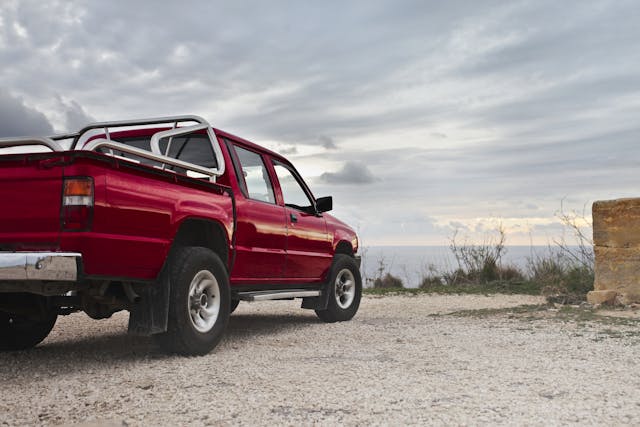Key Takeaways
- Assess your primary use to determine the appropriate truck size and capabilities.
- Understand the differences between cab and bed configurations for passenger and cargo needs.
- Evaluate engine choices and prioritize fuel efficiency based on your expected workload.
- Check towing and payload ratings if you plan to haul heavy loads regularly.
- Prioritize advanced safety tech and infotainment for your comfort and security.
- Factor in both purchasing price and lifetime ownership costs when budgeting.
- Always test drive and research reliability before you buy.
Finding a truck that checks all your boxes for daily driving, tough jobs, and weekend adventures can feel overwhelming, especially with so many models and features available. The right choice should seamlessly integrate with your lifestyle and work demands, while offering versatility, comfort, and reliability. To simplify your search, learn more about finding your ideal truck from experts who know how to match people with vehicles that fit every unique need. By focusing on your priorities and understanding what’s available, you’ll feel confident as you narrow down the options.
From spacious crew cabs to tough, high-torque engines, today’s trucks are more capable and sophisticated than ever. Before visiting a dealership, it’s vital to know what you want out of your truck, not just for today, but also for how your needs may grow. Will you be hauling materials, towing a trailer, or simply seeking a comfortable ride with robust safety features? Considering these questions early helps ensure you’ll drive off with the perfect fit.
Contents
Assess Your Primary Use
Determining exactly how you intend to use your truck should be your very first task. Are you searching for something primarily for daily commuting, occasionally transporting bulky hardware, or seeking a rugged ride for off-road pursuits? How you plan to use your truck will guide your decisions about size, configuration, and features.
If your truck will serve as a family vehicle with lots of suburban miles, comfort and fuel economy might be top priorities. For work crews or heavy-duty construction projects, maximum bed space and towing capacity may be non-negotiable requirements. Thinking long-term about your needs ensures that your investment will remain practical as your lifestyle evolves.
Understand Cab and Bed Configurations
Trucks are available in a range of cab and bed styles, offering varying levels of passenger room and bed length. Regular cabs are the most minimalist option, seating just two or three, ideal for short trips or strict job-site use. Extended cabs add limited rear seating, often accessed by rear-hinged doors, making them suitable for occasional extra passengers or stowing extra gear. If you frequently have multiple occupants, crew cabs provide spacious second-row seating and four full-size doors for easy access.
Bed length also matters. Short beds (5-6 feet) offer easier handling and parking, making them perfect for city driving. Long beds (up to 8 feet) provide more cargo space, which is crucial for hauling building materials or large equipment. Select the combination that strikes a balance between hauling needs and daily convenience.
Evaluate Engine Options and Fuel Efficiency
Trucks now offer more powertrain choices than ever, each offering a different balance of performance, efficiency, and cost. Gasoline engines are the most common, providing reliable everyday performance with wide availability. Diesel engines deliver greater towing capacity and improved fuel economy on longer hauls. For those seeking to reduce fuel costs or emissions, hybrid and electric models are gaining popularity, offering strong torque and smooth acceleration. According to an AP News report, automakers like Ford and Chevrolet are expanding their midsize truck lineups with updated powertrains to cater to shifting consumer preferences.
If you expect to face stop-and-go traffic or take long highway trips, fuel efficiency should be a top consideration. Check the EPA-estimated MPG figures for each engine option, especially as fuel prices continue to fluctuate. Hybrid models, for example, are often worth the investment for urban drivers seeking long-term savings.
Consider Towing and Payload Capacities
One signature advantage of trucks is their ability to move heavy loads, but not every model is created equal. It’s essential to compare towing capacity (the weight a truck can safely pull with a trailer) and payload capacity (the combined weight of cargo and passengers in the truck itself). Knowing your requirements, such as towing boats, trailers, or heavy equipment, will quickly eliminate models that don’t meet your needs, thereby protecting your safety and investment. According to HowStuffWorks, understanding the science behind towing capacity is crucial, as exceeding limits can strain the engine, transmission, and frame.
Check manufacturer guidelines and stay well within the recommended ratings. Overloading can cause unnecessary wear, reduce fuel efficiency, and increase the risk of accidents. Consider optional towing packages that may include upgraded cooling systems, trailer brake controllers, and enhanced suspensions.
Prioritize Safety Features and Technology
Today’s trucks are packed with safety technologies once reserved for luxury cars. Look for advanced driver assistance features like automatic emergency braking, lane departure warning, and blind spot monitoring. Also, modern infotainment systems, smartphone integration, and GPS navigation can make daily driving more convenient. Many trucks now feature large touch screens and integrated voice controls, enhancing connectivity and minimizing distraction.
Budget and Total Cost of Ownership
Set a realistic budget by accounting for the long-term costs of ownership, not just the sticker price. Factor in monthly payments, insurance, fuel, routine maintenance, potential repairs, and even resale value. Some trims might come with a higher upfront price but include advanced safety or tech features that can lead to savings over time.
Most dealerships and online tools can help you estimate your full cost of ownership, taking into account your region and driving habits. Don’t forget to investigate available warranties or maintenance incentives, which can provide added peace of mind and reduce long-term expenses. For a more comprehensive comparison, consult reviews and owner experiences on major automotive websites.
Test Drive and Research Reliability
After narrowing down your options, make time for thorough test drives of your top contenders. Test how the truck accelerates, handles, and brakes, especially under load if possible. Consider comfort: Is the seating supportive? Are controls intuitive and easy to reach? Comparing the real-world feel among different models is priceless and often reveals the right choice for you.
Finally, review long-term reliability and owner satisfaction. By considering these factors, you’ll be well-equipped to select a truck that delivers the performance, utility, and comfort you need for every aspect of your life. Careful planning, research, and expert resources will make your decision a wise investment for years to come.
Drive Away with Confidence
Choosing the right truck goes far beyond looks and horsepower. It’s about finding a reliable companion that enhances your everyday life, whether you’re commuting to work, managing a job site, or hitting the trails on weekends. By evaluating how you’ll use your truck, comparing configurations and powertrains, and carefully weighing factors like towing capacity, safety features, and long-term costs, you’re not just buying a vehicle.
Armed with knowledge and clear priorities, you can approach dealerships or online marketplaces with confidence. Take your time, ask the right questions, and trust that the perfect truck for your needs is out there, ready to carry the load and take you wherever life leads next.





